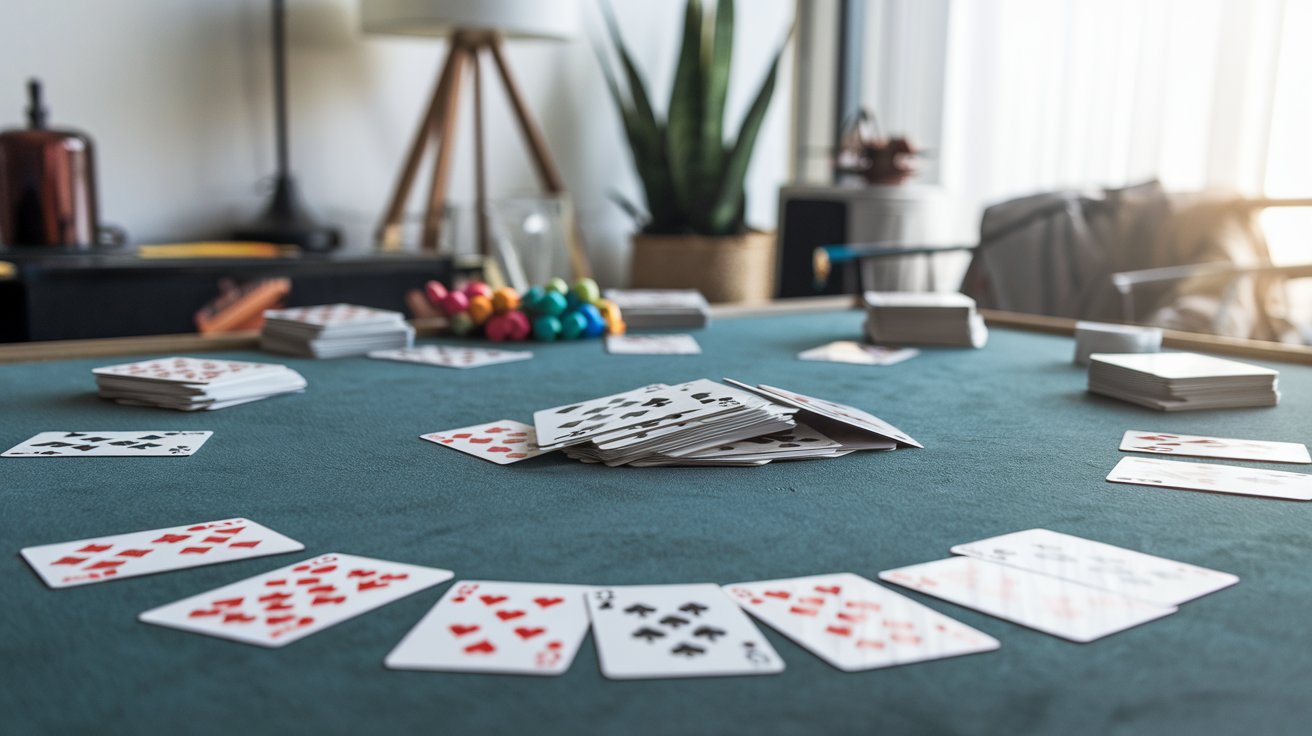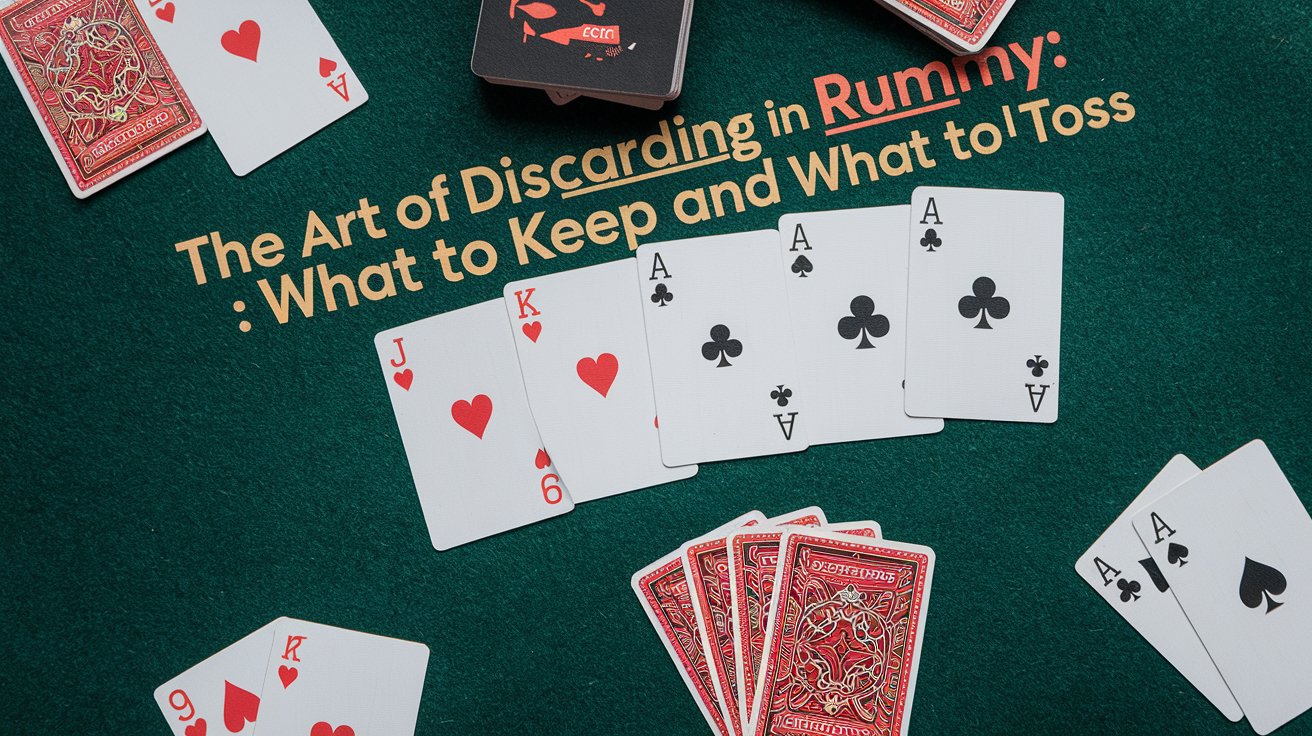Rummy is a game that combines strategy, skill, and a touch of luck. Whether you’re playing Gin Rummy, Indian Rummy, or another variant, one key aspect of the game that can significantly influence the outcome is discarding. The way you manage your discards is not just about getting rid of cards; it’s a critical part of your overall Rummy strategy. Discarding smartly can help you finish your hand faster, block your opponents, and avoid accumulating too many high-value cards that could cost you the game.
In this blog, we’ll explore the art of discarding in Rummy, explaining what to keep, what to toss, and why these decisions matter. Mastering this aspect of the game will help you become a more strategic player and increase your chances of winning.
Understanding Rummy Discards: The Basics

In Rummy, each player is dealt a hand of cards and takes turns drawing a card from either the stockpile or the discard pile and discarding one card at the end of their turn. The goal is to form melds — either sets (three or more cards of the same rank) or runs (three or more consecutive cards of the same suit).
The discarded card is placed face-up in the discard pile, and this is where things get interesting. Your discards can reveal your hand’s strategy and intentions to your opponents. Conversely, by paying attention to what your opponents discard, you can gather valuable clues about the cards they are looking for.
The Importance of Smart Discarding
Discarding isn’t just about getting rid of cards; it’s about strategy and misdirection. A poor discard can give your opponents a huge advantage, while a well-timed discard can thwart their progress. Whether you’re aiming to complete your melds quickly or prevent your opponents from completing theirs, the act of discarding plays a pivotal role in every game of Rummy.
What to Keep in Your Hand: Smart Card Management
The first step in mastering discarding in Rummy is knowing what to keep. Not all cards are created equal, and deciding which ones to retain in your hand can have a huge impact on your chances of winning.
1. Cards That Form or Complete Runs or Sets
If a card can contribute to a potential run or set, it’s usually a good idea to keep it. Runs (e.g., 4♠ 5♠ 6♠) and sets (e.g., 7♠ 7♦ 7♣) are your pathways to completing the game. Having cards that will help form these combinations increases your flexibility and options during the game.
Tip:
- If you have cards like 4♠ 5♠ in your hand, holding onto 6♠ can complete your run, and a 3♠ might help you form the beginning of another run. Cards that help complete multiple sequences are usually worth keeping.
2. Low-Value Cards (Especially in the Early Game)
In the early stages of the game, low-value cards (e.g., 2s, 3s, 4s) are generally safer to keep. These cards are easier to incorporate into runs or sets, especially since there are more opportunities to complete these combinations compared to high-value cards.
Tip:
- If you are dealing with multiple low-value cards, try to organize them in suits to increase the likelihood of forming runs. Having a handful of 2s, 3s, and 4s gives you options as the game progresses.
3. Cards That Can Fit Multiple Runs or Sets
Certain cards offer more flexibility than others. For instance, 7s can fit into multiple potential runs (e.g., 5♠ 6♠ 7♠, 7♣ 8♣ 9♣, etc.). Keeping cards that can form part of multiple combinations increases your chances of completing a valid meld later in the game.
Tip:
- Try to hold onto cards that work in multiple runs or sets. For example, keeping a 7♠ early in the game allows you to form different runs as new cards are drawn.
What to Toss: Avoiding Card Traps

Knowing what to discard is just as important as knowing what to keep. Discarding too many important cards or giving your opponents the opportunity to complete their hands can put you at a disadvantage. Here are some key guidelines on what to toss.
1. High-Value Cards (If Not Part of a Set or Run)
If you’re stuck with high-point cards (like Kings, Queens, and Aces) that are not part of a set or run, it’s usually best to discard them as soon as possible. These cards are risky, as they add significantly to your score if you fail to complete your hand before the game ends.
Tip:
- Discard high-value cards if they don’t contribute to your set or run. Jacks, Queens, Kings, and Aces are typically the first cards to be discarded if they don’t form part of a meld.
2. Unmatched Cards That Don’t Help Your Hand
If you have cards that don’t fit into any existing runs or sets, and they don’t contribute to forming new ones, it’s usually best to discard them. For example, if you’re holding onto a 5♠ and a 9♦ and neither fits into your melds, it’s wise to discard one of them to reduce your overall hand size.
Tip:
- Avoid holding onto cards that are “dead weight.” If a card doesn’t fit into any current meld or help form a potential new one, it’s likely better to toss it.
3. Cards That Complete Your Opponents’ Sets or Runs
Be cautious when discarding cards that could help your opponents. If you know your opponent is working on a particular run or set, avoid discarding cards that might complete their combination.
Tip:
- Watch your opponent’s discards and draws carefully. If you see them discarding or picking up cards from a particular suit or rank, don’t discard cards that could complete their set or run.
4. Jokers and Wild Cards (If Not Needed)
Jokers and wild cards are incredibly useful in Rummy, but only when they’re needed to complete a meld. If you’re not close to forming a set or run that requires a Joker, don’t be afraid to discard it. Holding onto a Joker when you don’t need it can limit your ability to build more flexible hands as the game progresses.
Tip:
- If you have a Joker but don’t have any incomplete sets or runs that require it, discard the Joker to keep your hand efficient and reduce the risk of holding too many wild cards.
Advanced Discarding Strategies in Rummy
Once you’re comfortable with the basics of discarding, you can begin implementing more advanced strategies that involve psychology, misdirection, and reading your opponents.
1. Misdirection: Discarding to Trick Your Opponents
In advanced Rummy play, misleading your opponents can be just as effective as playing your cards right. If you’re working on a specific run or set, discard cards that don’t seem to fit your strategy. By doing so, you can trick your opponents into thinking you are aiming for a different combination, making them discard cards that could help you.
Tip:
- Discard unnecessary cards that don’t match the rest of your hand, making it appear that you are going after a completely different set or run. This can confuse your opponents into discarding useful cards.
2. Control the Discard Pile
Your control over the discard pile can give you a psychological advantage. By discarding strategically, you can limit the options available to your opponents and force them to adjust their strategies.
Tip:
- Pay attention to the discard pile and choose cards that won’t help your opponents. If they are discarding 6♠ and 7♠, you could toss a 5♠ to block them from completing a run in spades.
3. Timing Your Discards
Timing is crucial in Rummy. Discarding too early can reveal your strategy, while discarding too late can leave you stuck with high-value cards. Timing your discards wisely will keep your opponents guessing and prevent them from knowing your hand.
Tip:
- Be patient. If you can afford to wait, observe how your opponents are playing before making your final discard. This gives you a better chance of adjusting your strategy based on their moves.
Conclusion: Mastering the Art of Discarding in Rummy

In Rummy, discarding is more than just a routine action. It’s a crucial part of your overall strategy, requiring careful consideration of which cards to keep and which to toss. Whether you’re trying to complete your sets and runs, avoid accumulating high-value cards, or mislead your opponents, discarding wisely will give you a significant advantage.
By following the tips in this blog — from keeping low-value cards to discarding high-point cards early, and even using misdirection — you’ll improve your decision-making and your overall gameplay. Remember, Rummy is about being strategic and flexible, so use discarding as a tool to adjust to the ever-changing dynamics of the game.
So, the next time you sit down to play Rummy, keep these discarding strategies in mind, and watch your game improve. With practice, you’ll soon master the art of discarding and become a Rummy expert!

Zareb Saleh is a journalist at Gulf Today and a ghostwriter for Gameoholic, specializing in gaming, technology, and digital culture. With a keen eye for industry trends, he delivers insightful stories that engage and inform readers.
